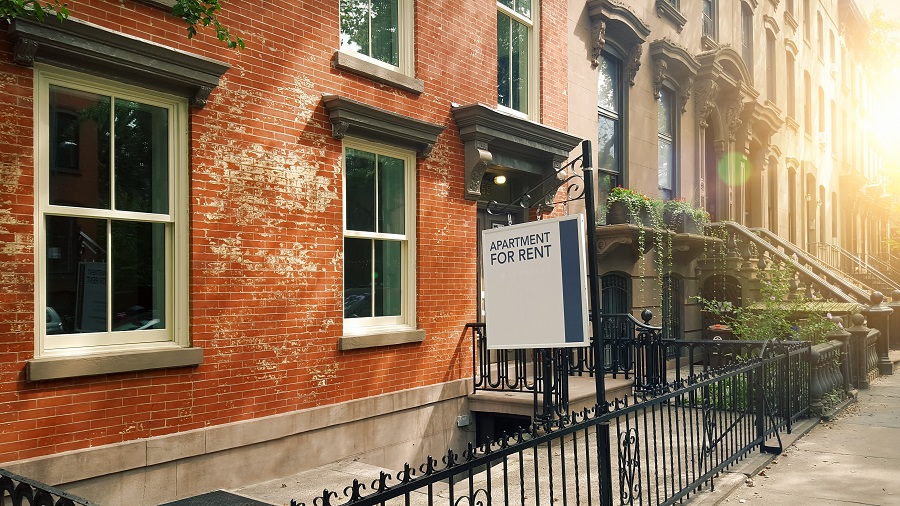Coronavirus Drives Biggest Rent Slowdown In At Least Five Years (April 2020 Market Report)
The coronavirus helped slow annual rent growth by half a percentage point in April from March, the largest monthly drop in at least five years.

The coronavirus helped slow annual rent growth by half a percentage point in April from March, the largest monthly drop in at least five years.

Annual rent growth slowed by half a percentage point in April from March, the largest monthly drop in at least five years, as the U.S. coronavirus pandemic and resulting economic slowdown that began in March hit in fuller force last month. But while the rental market slowed, more-recent data from the for-sale segment shows modest acceleration after a slow early-April.
Rent growth had been chugging along at a remarkably stable pace since 2018, with the growth rate rarely rising or falling much from one month to the next. That changed in April, the first full monthly reading since the coronavirus pandemic struck the U.S. Typical U.S. monthly rent was $1,594 in April, according to the newly released Zillow Observed Rent Index (ZORI) — up 2.9% from a year ago, but still the slowest annual growth pace recorded since December 2017. Rents were growing 3.4% year-over-year in March, and that 50 basis point slowdown is the largest since at least 2014, when the ZORI series begins.
Year-over-year rent growth slowed in April from March in 33 of the 35 largest U.S. metros, with Columbus and Cleveland the only exceptions. Among those large markets, annual rent growth in April was slowest in Baltimore (+0.4% year-over-year), New York(1.1%), Houston (1.3%) and San Jose (1.3%). Annual rent growth was fastest in April in Phoenix (7%), Seattle (4.7%) and Cincinnati (4.6%).
And even in areas where rent was up compared to April 2019, rent itself was lower than March in 16 of the largest 35 markets, with the biggest monthly dollar declines observed in San Jose (-$18, from $3,097/month in March to $3,079 in April), Austin (-$18, from $1,585 to $1,567) and Los Angeles (-$13, from $2,516 to $2,503).
Rent growth is seasonal, and shifts over the course of a year should be expected as local rental demand waxes and wanes — in Boston, for example, rent growth is often strongest in the late summer/early fall as students return to the area’s many universities and lease up more apartments. The headline ZORI is smoothed, but not seasonally adjusted, in an effort to capture these natural seasonal changes in the market. Even so, looking at the same month in prior years can offer some perspective on what a rental market is “normally” doing at a given time of year. And April 2020 was not “normal,” at least compared to April 2019.
A year ago, annual rent growth was slower in April than in March in just 11 of the 35 largest markets — and typical rent itself was higher in April 2019 than in March 2019 in every single one. Absent other compelling reasons why rent growth would be much softer this year than last in a majority of markets, it seems clear the coronavirus is prompting landlords to be less-aggressive in raising the rent, likely in an effort to retain and attract more tenants through tough economic times.
But even as the rental market cools this spring, the for-sale market continues to gain momentum. In the week ending May 10, newly pending sales nationwide were up almost 50% from the same period in April. And they are higher than a year ago in four large metros — Cleveland (up 10% year over year), Cincinnati (up 3.8%), Houston (up 2%) and Dallas-Fort Worth (up 0.9%).
New for-sale listings have also turned the corner after a steep drop in early spring, now up 12.5% month-over-month as of the seven days ending May 10, though they remain down 27.6% from last year.
The relatively low, though improving, flow of new listings and the increasing rate of pending sales have helped push total inventory down to 20% below last year’s level. Zillow’s most recent forecast shows an expected 2.7% decline in home prices from February to October — a decrease that might be expected to be steeper given the current climate, but for the combination of strong buyer demand and limited inventory which help buoy prices.
Home values continued their upward trajectory in April, with the typical U.S. home value growing 4.3% year over year to $250,492, according to the U.S. Zillow Home Value Index. The pace of yearly U.S. home value growth has now accelerated every month this year, after slowing for 20 consecutive months beginning in spring 2018. Among the nation’s 35 largest markets, annual home value growth was fastest in April in Phoenix (+8.9%), Seattle (7%) and Charlotte (6.2%). Annual growth was slowest in April in Chicago (1%), New York (1.2%) and Baltimore (1.2%).